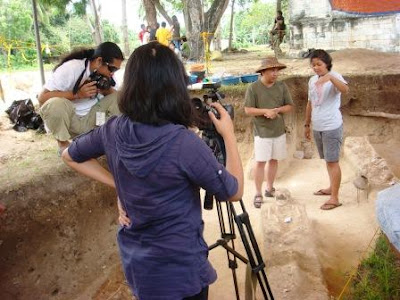The first San Remigio Archaeological Fieldwork Project and the 2011 USC-NM Archaeological Field School officially ended today with the departure for Manila of the National Museum team led by Dr. Ame Garong.
Last Sunday, we left the site, with two vehicles courtesy of Gov. Gwendolyn F. Garcia and the Cebu Provincial Tourism and Heritage Council, our partner in this project.
All the excavation units have been backfilled and all that is left of the largest unit with the six burials are the tents generously provided to us by the Municipal Government of San Remigio, which also defrayed the cost of accommodations of the team, courtesy of Mayor Jay Olivar. Our thanks to the governor, the mayor and to Fr. Fritz Malinao as well as Fr. Tata, his assistant, and also to Archbishop Jose Palma and Msgr. Carlito Pono of the Archdiocesan Commission for the Cultural Heritage of the Church. Kudos to the people of San Remigio. We hope to return soon.
Last Sunday, we left the site, with two vehicles courtesy of Gov. Gwendolyn F. Garcia and the Cebu Provincial Tourism and Heritage Council, our partner in this project.
All the excavation units have been backfilled and all that is left of the largest unit with the six burials are the tents generously provided to us by the Municipal Government of San Remigio, which also defrayed the cost of accommodations of the team, courtesy of Mayor Jay Olivar. Our thanks to the governor, the mayor and to Fr. Fritz Malinao as well as Fr. Tata, his assistant, and also to Archbishop Jose Palma and Msgr. Carlito Pono of the Archdiocesan Commission for the Cultural Heritage of the Church. Kudos to the people of San Remigio. We hope to return soon.
 |
| No more excavations. The soil is back where it belongs. |

















































